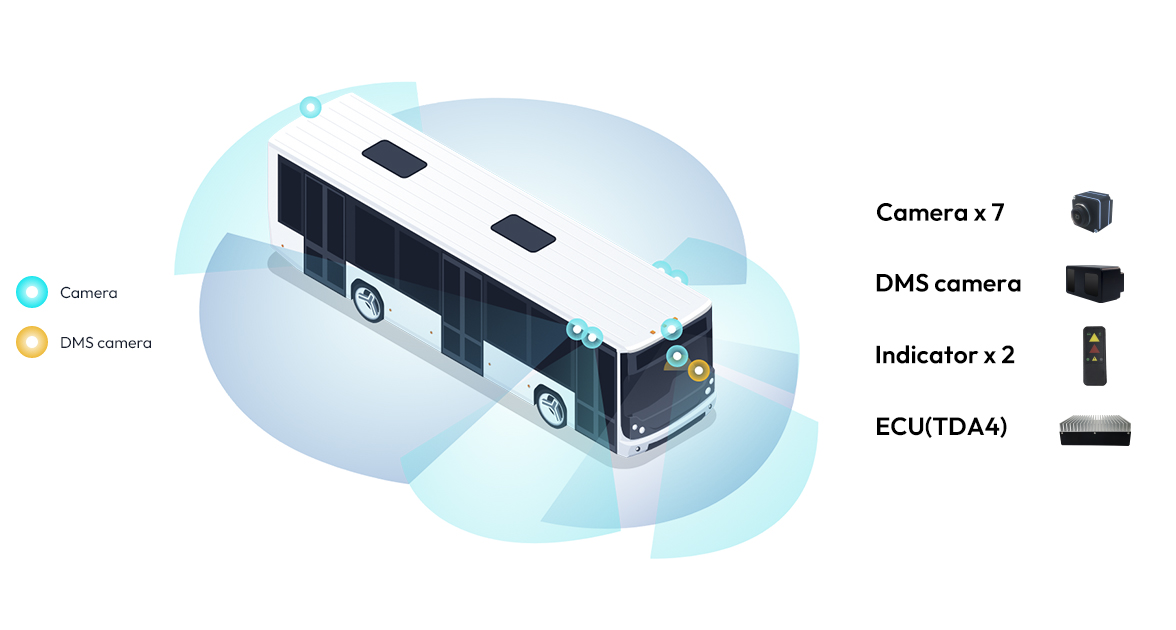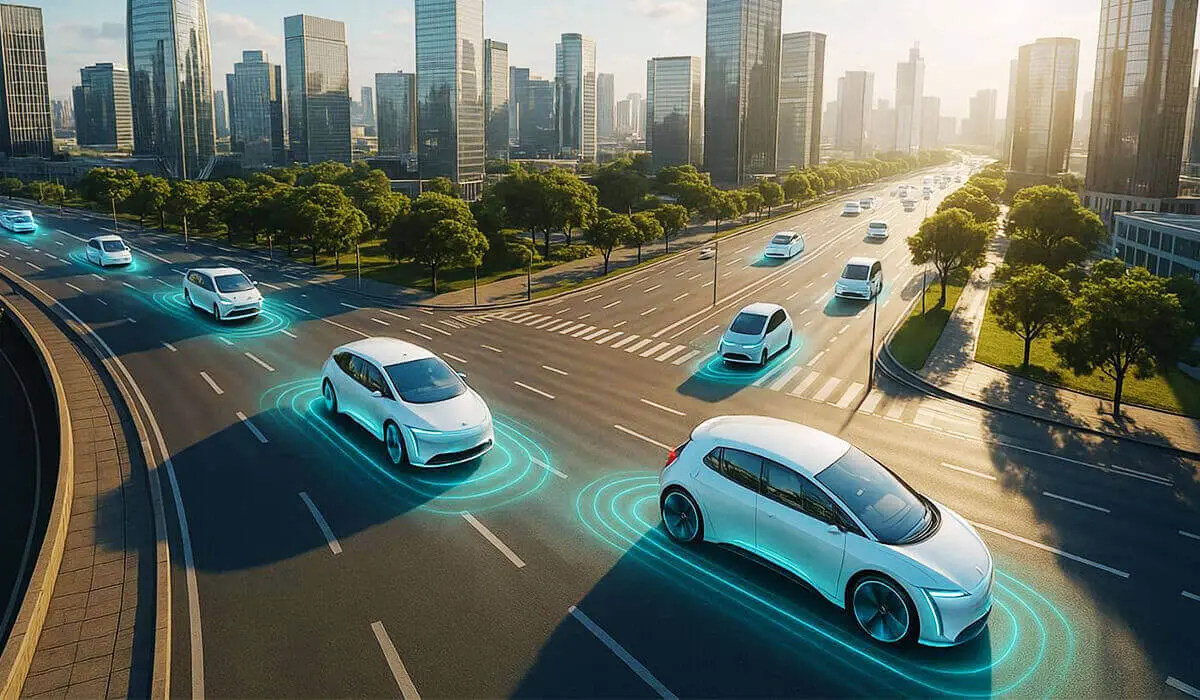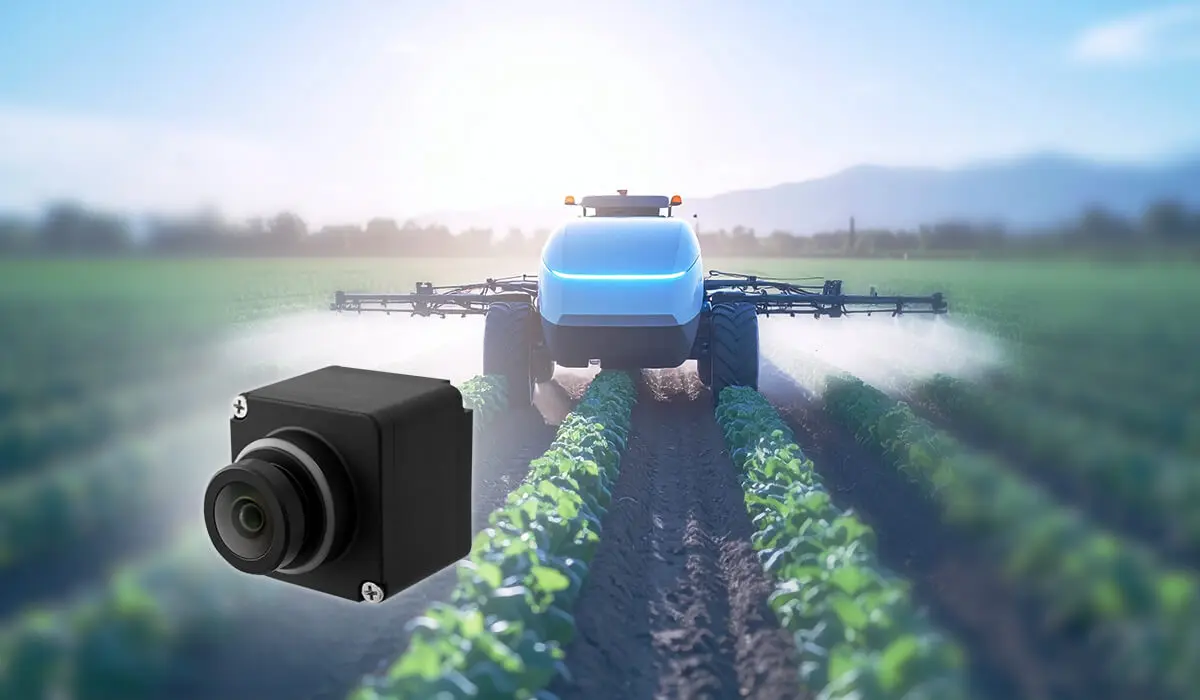Understanding UN Vehicle Safety Regulations & How Sensors Help Vehicles Comply
Global road safety is increasingly shaped by international regulations, and the United Nations Economic Commission for Europe (UNECE) is one of the key organizations behind the harmonization of vehicle standards. Through its World Forum for Harmonization of Vehicle Regulations (WP.29), UNECE has established safety requirements that are now legally adopted in more than 60 countries worldwide.
While UNECE regulations cover a wide range of areas from braking systems and lighting to cybersecurity, this article focuses on the standards most relevant to Advanced Driver Assistance Systems (ADAS). We'll highlight the key regulations and explore the types of common sensors such as cameras, radar, ultrasonic, and lidar used to help vehicles meet each requirement.
What is UNECE/WP.29?
The World Forum for Harmonization of Vehicle Regulations (WP.29), established under the United Nations Economic Commission for Europe (UNECE) over 50 years ago, provides a global framework for harmonized vehicle regulations. Its main objectives are to improve road safety, support the introduction of innovative vehicle technologies, reduce environmental impact, and facilitate cross-border trade through mutual recognition of vehicle system approvals.
By setting internationally accepted standards, WP.29 ensures that automakers can develop advanced safety systems, including regulations related to ADAS features, that meet consistent requirements across multiple markets, while also promoting sustainability and efficient global vehicle operations.
Key UNECE/WP.29 Regulations Related to ADAS and Common Sensor Types
To comply with some UNECE/WP.29 vehicle safety standards, modern vehicles must integrate ADAS that meet strict performance and testing requirements. Each regulation focuses on a specific safety function, and achieving compliance depends heavily on sensor technologies with cameras, radar, lidar, and ultrasonic sensors each playing distinct roles. Below, we outline the most relevant ADAS-related UNECE regulations and the common sensor types used to meet their requirements.
UN R46 – Devices for Indirect Vision
UN R46 defines requirements for devices that provide drivers with indirect vision, traditionally covering rear-view and side mirrors. In recent years, the regulation has been updated to include camera-monitor systems (CMS) that can replace conventional mirrors in some vehicles. Compliance ensures drivers have clear, reliable visibility of surrounding areas, helping prevent collisions and improving situational awareness.
Common Sensors:
- Cameras: Replace traditional rearview, side, or front mirrors and provides live visual feedback to the driver.
UN R79 – Steering Equipment
UN R79 sets requirements for steering systems and advanced driver assistance functions involving automated steering. Key supporting features include Lane Keeping Assistance (LKA, CSF/ACSF-B1/ESF) and Lane Change Assistance (LCA, ESF/ACSF-C). The regulation ensures these functions operate safely, stay under driver supervision, and meet performance criteria like maximum lateral movement, fail-safe responses, and driver override.
Note: CSF = Corrective Steering Function; ACSF = Automatically Commanded Steering Function (B1 = LKA, C = LCA); ESF = Emergency Steering Function.
Common Sensors:
- Forward-facing cameras: Detect lane markings and support lane centering.
UN R130 – Lane Departure Warning System (LDWS)
This regulation specifies how lane departure warning systems must perform in order to detect unintended lane drifts. It defines testing conditions, such as vehicle speed and road markings, to ensure reliable alerts for drivers. LDWS is an important ADAS function because it helps prevent collisions caused by distraction or drowsiness.
Common Sensors:
- Forward-facing cameras: Detect lane markings and alert the driver when the vehicle drifts unintentionally.
UN R131- Advanced Emergency Braking Systems for M2,M3,N2,N3 Vehicles
UN R131 applies to larger vehicle categories such as trucks (N2, N3) and buses/coaches (M2, M3), primarily operating under highway conditions. The regulation requires AEBS to detect potential forward collisions, warn the driver, and automatically apply braking if no corrective action is taken. For heavy vehicles with long stopping distances, AEBS is crucial in reducing the severity or likelihood of crashes on motorways.
Common Sensors:
- Forward-facing cameras: Identify objects and lane context, improving detection of vulnerable road users.
- Forward-facing radar: Measures distance and relative speed of vehicles ahead.
- Optional lidar: Provides additional accuracy in complex or high-speed environments.
UN R151 – Blind Spot Information Systems (BSIS)
UN R151 introduces performance requirements for blind spot monitoring, particularly targeting the safety of cyclists and pedestrians in urban traffic. The system must detect vulnerable road users located in areas not visible to the driver, and issue clear warnings before lane changes or turns. This regulation is especially critical for large trucks and buses, where blind spots are significant. By enforcing consistent detection capabilities, UN R151 directly reduces the risk of side-impact collisions.
Common Sensors:
- Side-facing cameras: Monitor vehicle blind spots while also classifying objects and detecting static vulnerable road users (VRUs) such as pedestrians and cyclists more effectively than radar.
- Radar: Measures distance to objects, also providing redundancy in low-visibility conditions.
UN R152 – Advanced Emergency Braking Systems for M1, N1 Vehicles
UN R152 applies to smaller vehicles, specifically passenger cars (M1) and light commercial vans (N1), typically used in urban and mixed traffic conditions. Similar to UN R131, the system must detect imminent forward collisions, issue a warning, and automatically brake if the driver does not react. In urban contexts, AEBS helps protect pedestrians, cyclists, and other road users by reducing accidents at lower speeds.
Common Sensors:
- Forward-facing cameras: Classify objects (vehicles, pedestrians, cyclists).
- Radar: Measures the distance and relative speed of the vehicle ahead.
- Optional lidar: Enhances 3D perception in complex traffic environments for more accurate detection.
UN R157 – Automated Lane Keeping Systems (ALKS)
UN R157 is the world's first regulation for Level-3 automated driving and focuses on Automated Lane Keeping Systems (ALKS) for low-speed applications originally for traffic jam. The system is activated by the driver and can control both lateral and longitudinal movements to keep the vehicle within its lane at speeds up to 60 km/h now extended to 130 km/h, without requiring continuous driver input.
Common Sensors:
- Cameras: Continuously detect lane markings to maintain lane positioning, monitor surrounding traffic and obstacles for safe automated maneuvers and detect driver's attention.
- Radar/lidar: Monitor surrounding traffic and obstacles for redundancy of 360゚environment perception.
UN R158 – Reversing Motion Systems
Reversing accidents are a frequent cause of injury, especially to children and pedestrians. UN R158 requires vehicles to have reversing sensors that provide drivers with clear visibility or warnings when backing up. The regulation defines field-of-view, display, and detection performance criteria.
Common Sensors:
- Rear-facing cameras: Show clear visibility behind the vehicle.
- Ultrasonic sensors: Detect close-range obstacles.
UN R159 – Moving Off Information Systems (MOIS)
UN R159 focuses on vulnerable road users positioned directly in front of large vehicles during start-up. MOIS must detect pedestrians or cyclists in this forward blind spot and alert the driver before the vehicle begins moving. This is particularly important for heavy trucks in busy city centers. By standardizing detection capabilities, UN R159 reduces the likelihood of low-speed but severe accidents involving VRUs.
Common Sensors:
- Forward-facing cameras: Detect pedestrians, cyclists, and moving objects in the vehicle’s forward blind spot.
- Radar: Measures distance to objects, improving detection under poor visibility or adverse weather.
Turning UNECE/WP.29 Related ADAS Standards into Real-World Solutions with oToGuard
Understanding UNECE/WP.29 regulations and the sensor requirements is one thing, putting them into practice on real vehicles is another. When there is a new regulation, car OEMs need to find and evaluate new system or supplier, and that is not easy for supply chain and quality management, not to mention the installation space and cabling limitation. To bridge this gap, oToBrite offers oToGuard Level 2+ All-in-one ADAS, a camera-based solution leveraging vision-AI technology to deliver full ADAS functionality while meeting regulatory standards.

Unlike other distributed systems, oToGuard highly leverages automotive camera and centralized architecture. Cameras provide high-resolution, detailed visual information that allows the system to detect and classify lanes, pedestrians, cyclists, two-wheeler riders and vehicles more accurately. This approach reduces system complexity and cost, while still providing a full 360° view around the vehicle to help minimize blind spots and prevent collisions.
oToGuard combines an automotive-grade ECU, 8 high-resolution automotive cameras, and vision-AI deep learning algorithms to deliver a complete suite of ADAS features.
- Blind Spot Information System (BSIS, UN R151): Protects vulnerable road users, especially pedestrians and two-wheeler riders, within 40 meters of the vehicle sides.
- Moving Off Information System (MOIS, UN R159): Detects pedestrians, cyclists, and moving objects directly in front of large vehicles during start-up.
- Lane Departure Warning (LDW, UN R130)
- Rear View (Reverse Mode, UN R158)
- Forward Collision Warning (FCW)
- Headway Monitoring Warning (HMW)
- Pedestrian Collision Warning (PCW)
- Driver Monitoring System (DMS)
- Around View Monitoring (AVM)
With its camera-centric design, oToGuard not only ensures compliance with current UNECE/ WP.29 regulations but also lays the foundation for higher-level ADAS functionalities, such as Adaptive Cruise Control (ACC), Automatic Emergency Braking (AEB), Lane Change Assistance (LCA, UN R79 ESF/ACSF-C), and Lane Keeping Assistance (LKA, UN R79 CSF/ACSF-B1/ESF).
This integrated, all-in-one ADAS solution demonstrates how sensor technologies when optimized for specific regulatory requirements can transform UNECE/WP.29 standards into real-world safety benefits for drivers and vulnerable road users alike.
Get the Complete Overview of oToGuard Level 2+ ADAS
FAQs
1. What does UNECE stand for?
UNECE stands for the United Nations Economic Commission for Europe. It is one of the regional commissions of the UN, focusing on economic cooperation, transport, and sustainability among member states.
2. What does WP.29 stand for?
WP.29 refers to the World Forum for Harmonization of Vehicle Regulations. It operates under UNECE and is the body responsible for developing and maintaining international vehicle regulations.
3. What are UNECE/WP.29 vehicle safety regulations?
UNECE/WP.29 regulations are internationally harmonized vehicle standards established by the World Forum for Harmonization of Vehicle Regulations. They set performance, testing, and safety requirements for vehicles and their systems, including regulations related to Advanced Driver Assistance Systems (ADAS).
4. Are UNECE vehicle safety regulations applicable worldwide?
While UNECE/WP.29 regulations were developed in Europe, they are legally adopted in over 60 countries. Many automakers follow these standards to ensure safety, compliance, and international market access.
5. Which UNECE regulations are most relevant to ADAS?
Key ADAS-related UN regulations include UN R46 (Indirect Vision), R130 (Lane Departure Warning System), R151 (Blind Spot Information System), R131/R152 (Advanced Emergency Braking System), R157 (Automated Lane Keeping System), R158 (Reversing Motion System), and R159 (Moving Off Information System).
6. How do sensors help meet UNECE/WP.29 ADAS regulations?
Sensors such as cameras, radar, lidar, and ultrasonic devices are vital for detecting objects, road markings, and vulnerable road users. Among these, cameras play an increasingly central role in ADAS, as they not only provide rich visual information but also enable accurate classification of objects and easier recognition of pedestrians, cyclists, and static obstacles compared with other sensors.
7. How do sensors improve road safety?
By detecting potential hazards in real time, sensors enable automated warnings and interventions, reducing collisions and protecting drivers, passengers, and vulnerable road users such as pedestrians and cyclists.
8. What are the most common ADAS-related acronyms I should know?
Here are some of the most relevant acronyms:
- ADAS: Advanced Driver Assistance System
- BSIS: Blind Spot Information System
- MOIS: Moving Off Information System
- FCW: Forward Collision Warning
- AVM: Around View Monitoring
- DMS: Driver Monitoring System
- ACC: Adaptive Cruise Control
- AEB: Autonomous Emergency Braking
- LKA: Lane Keeping Assist
- ALKS: Automated Lane Keeping Systems
- AEBS: Advanced Emergency Braking System
- LDWS: Lane Departure Warning System

How SafeZone Revolutionizes Bus Safety with Automotive Camera and Vision AI Detection

What is ADAS? Features, Sensors, and Levels of Driving Automation Explained

